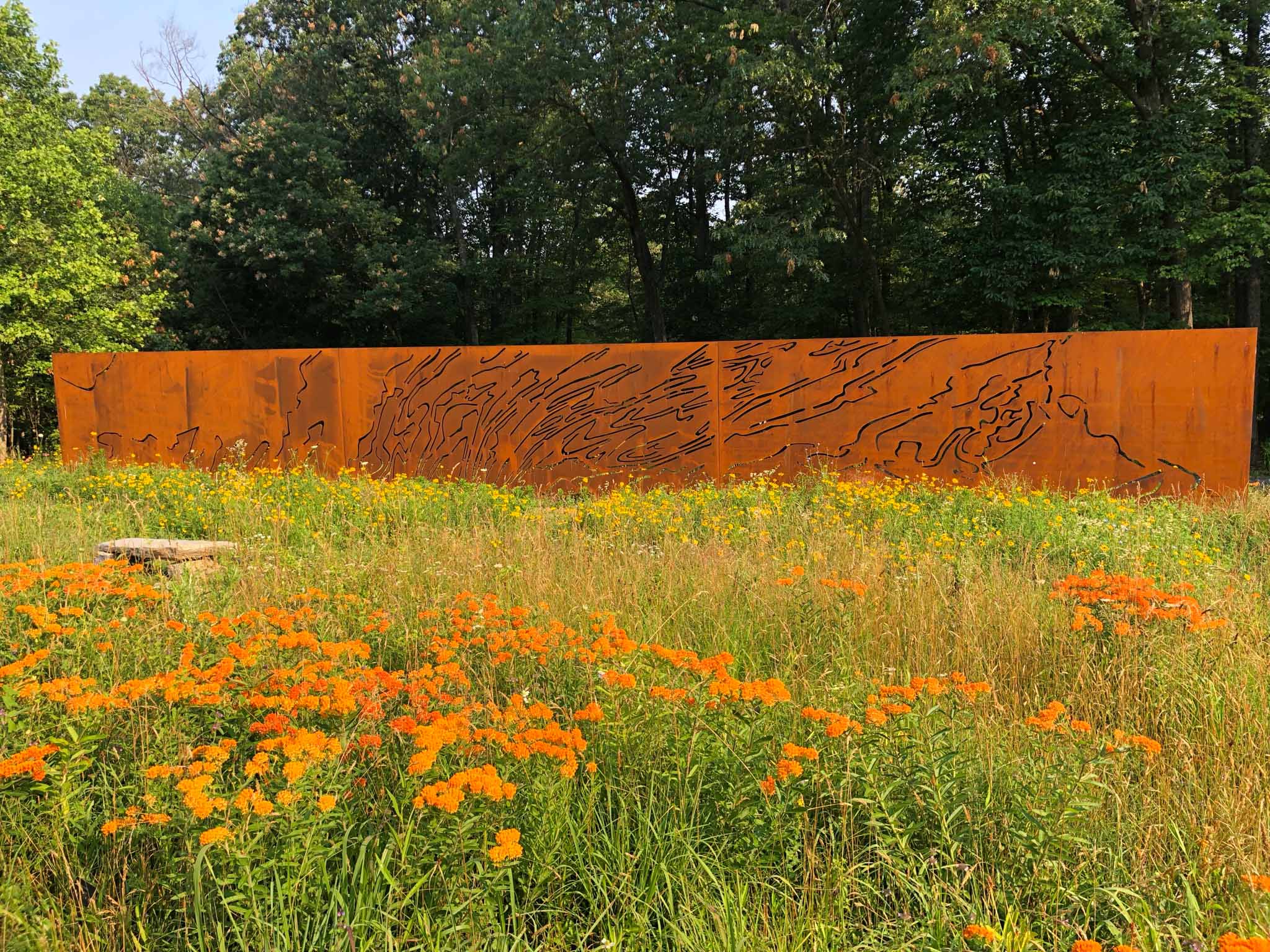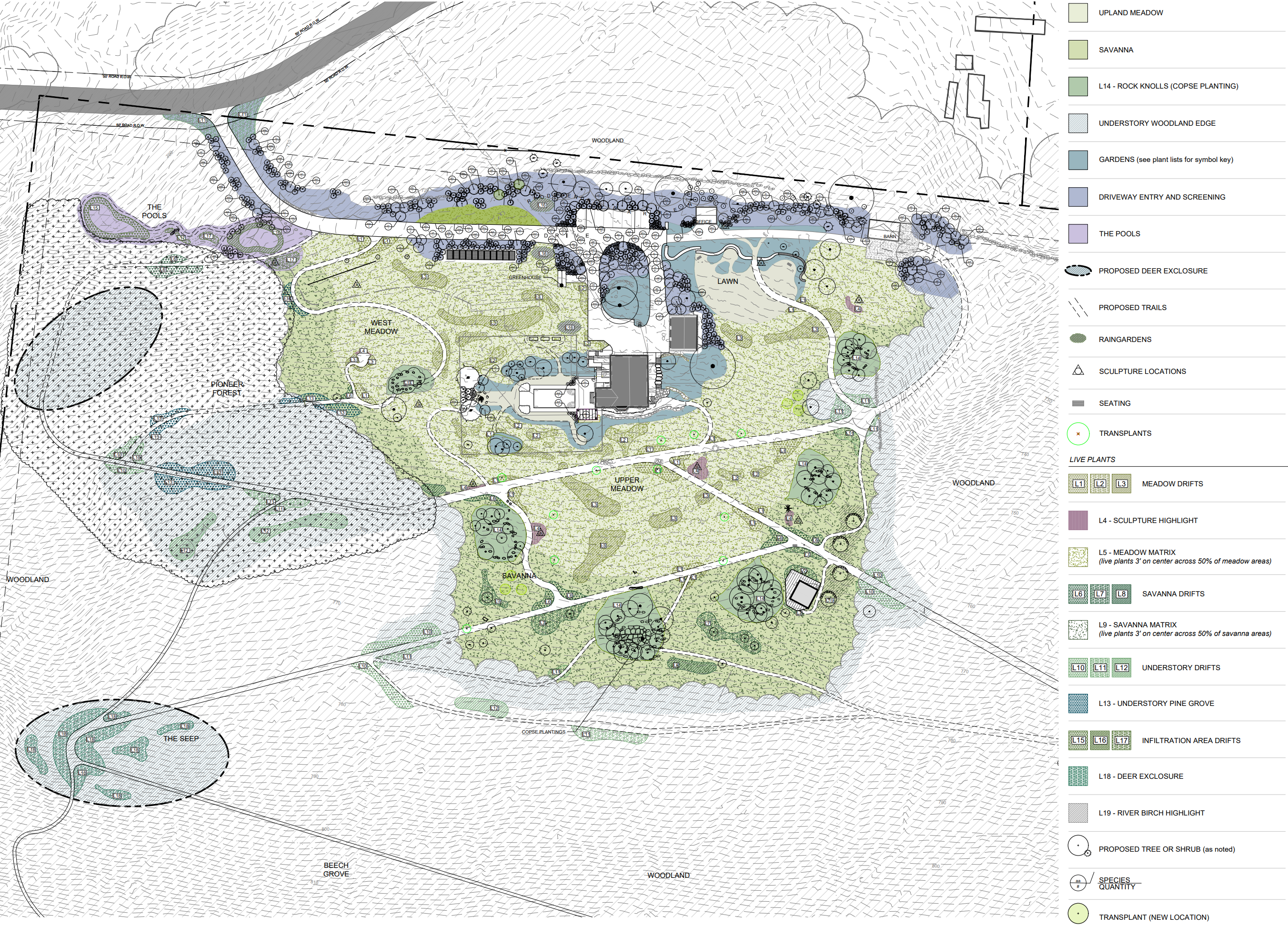
Our landscape consists of a six acre long-lived open meadow embraced by a 30 acre woodland untouched since early in the twentieth century. Our vision is to sensitively renew, enhance and diversify the meadow with persistent stewardship and new plantings. Sculptures provide structure, contrast and focal points within the landscape and helps start conversations about our place in the Appalachians and the processes that occur within the landscape.
In 2019, landscape architecture firm Oehme, Van Sweden (OvS) of Washington D.C. created a conceptual master plan for The Bower saturated with a strong sense of place and natural history and processes. Design work in 2020 by Larry Weaner Landscape Associates developed our horticulture plan focused on creating a seamless horticultural gradient from curated native plant gardens within garden borders to diversified open meadow spaces and wild forest lands.
Each landscaped area is planned to complement the whole and is designed to enhance, but not replace, the long-lived native meadow and woodland. Paths throughout the open areas and tall stand forest provide our visitors with the opportunity to encounter flora, fauna and unique geologic features of the Pennsylvania Appalachian Mountain region.

Starting in 2020, we partnered with Larry Weaner Landscape Associates of Glenside, PA to implement the landscape horticultural design. The planting plan is depicted in the image above. Planting lists can be referenced via the link below. The resulting gardens, meadow drifts, and accents will mature and continue to develop through both maturity and our interventions. Over 200 species of native trees, shrubs, forbs, and grasses are on display at The Bower, placed by wind, birds, animals, and humans. While the recently introduced plants are native to North America, they are in some cases indigenous to other regions of the east coast. For general information on native plants and how they support biodiversity, click on the RESOURCES link below.
Our garden spaces, meadows plantings and forestry support bees, birds, butterflies, fauna and people. Our plantings and steadfast stewardship practices directed at invasive species are focused on furthering biodiversity in the landscape. Native plantings have been selected that thrive without extra care, are generally deer resistant, and provide food and habitat for local insects and wildlife. Mowed lawn is kept to a minimum, although meadow mowing is used as an enhancement strategy to suppress cool season grasses and various invasive species. Organic fertilizers and pest control methods are used exclusively. Grass clippings, leaves, and other biomass from the property are composted on site or left in place to regenerate soils and provide habitat for wildlife.
BOWER PLANTINGS – CHRONOLOGICAL LISTS
Through the arched stone wall entry is the lawn area where groups can gather, surrounded by native plantings and meadows, woods edge, and the forest.
Learn MoreA large native meadow encompasses the six acre open area of The Bower, providing habitat for pollinators, birds, and other creatures. Drifts of native perennials have been added to enhance the naturally existing meadow forbs and grasses.
Learn MoreGarden beds throughout the landscape are planted with native species of flowering trees and shrubs, forbs, and grasses demonstrating native plant landscaping opportunities and allowing visitors to witness close up pollinator activities.
Learn MoreCopses of trees dot the meadow forming shady "bowers", with varied tree species and unique features.
Learn MoreThe transition from meadow to woods or savanna is a partially shaded plant community of small trees, shrubs, forbs, ferns, and mosses.
Learn MoreTrails throughout the thirty acres of forest take visitors through a diversity of forest species and settings.
Learn MoreWhen a meadow is left undisturbed for many years, it will return to its natural state, the forest, with fast growth species as the "pioneers".
Learn MoreDotted within The Bower are a variety of small natural and constructed wetland habitats that can be found as one traverses The Pools and the base of the escarpment in the forest.
Learn Morebower (noun) 1. a pleasant shady place; 2. a retreat or sanctuary